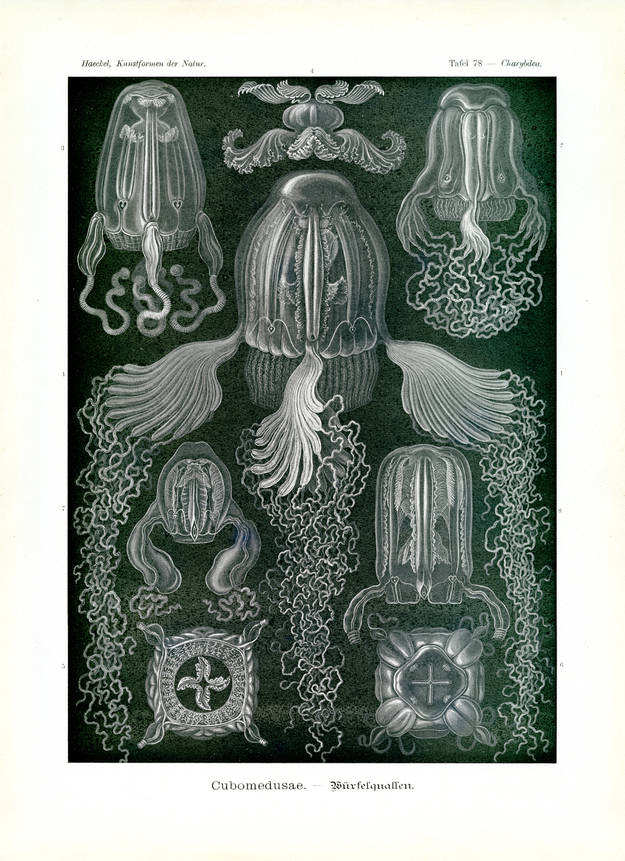Translation of the original German introduction by Ernst Haeckel:
Phylum of Cnidaria (Nesseltiere); - class of Acraspedae (Lappenquallen); - order of Cubomedusae (Würfelquallen).
‘Cubic medusas’ (Cubomedusae) are most rare animals, in most cases living in deep-sea; on the one hand related to ‘pouch-medusas’ (Peromedusae, plate 38), on the other to the common ‘disc-medusas’ (Discomedusae, plate 8, 18, 28, 88, 98). They are distinguished from both orders by the square shape of their high-arched gelatinous umbrella; it is at times almost cubical in shape (fig. 2, 5, 6) or quadrangular-prismatic (fig. 8), at times more pyramidal (fig. 3) or bell-shaped (fig. 1). At the lower rim of the umbrella from which a fine ‘rim-veil’ (Velarium) is hanging down, four inter-radial Pedalia are fixed carrying the long, curled and most flexible ‘capturing filaments’ . In Charybdea (fig. 3-8) Pedalia are simple, which means that only four tentacles are there; in Chirodropida, however, (Fig. 1 and 2) the four Pedalia are palmate, divided into several fingers with each finger holding a tentacle. Along the four flat sides of the umbrella, in the centre of the base, four perradial eyes are positioned; they are of a strictly composed structure, contained in a heart-shaped niche or eye socket (fig. 1-3, 7 and 8). The four eyes are connected among each other and with the four tentacles with the help of a strong ‘nerve-ring’; this ring is better developed than in other medusas coming down on each side in a curve from the eye to the base of the Pedalia (fig. 1, 7 and 8). At the bottom of the umbrella cavity the stomach rests with the base of its mouth opening surrounded by four mouth-lopes. Inside the four flat pouches that emerge from the stomach to the interior surface of the umbrella four pairs of band-shaped gonads or sexual glands are resting with their free rim delicately frilled.
Translation by VR Translators Bangalore
We've scanned the original lithography at 1200dpi on the Epson A3 scanner of A3 scanner huren. You can download a 400dpi JPEG here.
